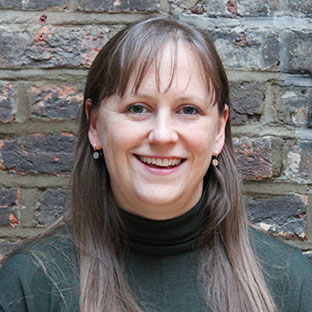Thurston Hopkins died this week aged 101. He was a photojournalist whose images captured British life and its humanity and inequalities in the 1950s. They say a picture paints a thousand words.
This got me to thinking about telling stories. A crucial skill that when effectively wielded has people hanging off your every word, increasing the chances that they will act on the information, which in the think tank world desirous of influence and impact is the holy grail.
Make no mistake though, storytelling is an art. But being an art doesn’t make it unobtainable and esoteric, instead storytelling is the reverse: crafted and considered; engaging and entrancing; a clear and compelling message to pass on to its audience.
So what is the best way of doing this?
Yesterday, a new sculpture by Gillian Wearing was unveiled in Birmingham. This followed a competition run by Ikon Gallery to find ‘a real Birmingham family’. The winners, now immortalised in bronze in pride of place by the Library of Birmingham, are two single mum sisters, Roma and Emma Jones (the latter with pregnancy bump) walking along with their two sons Kyan and Shaye.
This is a project that appears to have engaged the local Birmingham community (there were 372 nominations) who liked the idea that they might represent what it means to be a family in Birmingham, now. This sculpture then explores stories of family, meanings of identity and what it is to be typical, whilst celebrating ‘the unsung and the everyday’. There are lots of people that don't relate to the 'traditional' family unit but might relate to this. The telling of a story to challenge what we think normal is. Clever in my book.
Stories or to put it another way, paradigms, create cultural norms. Accepted ways of thinking about things. When our friends and families tell the same ‘stories’ as us we feel comforted, reassured and bolstered that our worldview is right and just. Trying to get people to see things from a different perspective then requires something different.
We are very comfortable publishing reports. Some people even read them. Some get read a lot. Some don’t. The World Bank bravely led the way in sharing exactly how many (or not) of their reports are downloaded, which the Washington Post depressingly but understandably extrapolated to mean ‘the solutions to all our problems may be buried in pdfs that no one reads’.
So as we continue exploring what impact the RSA should have in the world, what change we want to be a part of creating, what are the ways we should be telling these stories?
IPPR have just published a graphic novel, six pictorial stories of life and change in communities in Britain and the Open Society Foundations has also done similar telling the story of Somali communities around the world. Artists Grennan and Sperandio also did similar in Peterborough with the Street Pastors as part of our Citizen Power Peterborough programme (see why it’s important to keep telling that story – changing perceptions of place is a slow burner).
The RSA also has captured peoples’ imagination with RSA Animates, a series of animations designed to bring to life stories of world changing ideas. Sir Ken Robinson’s ‘Changing Education Paradigms’ is on over 12 million views. Astonishing. So more of that then please.
Is blogging the way to go? My colleague Andres Fossas recently had some viral success with his blog ‘The Age of Awareness’ (I recommend reading it, it’s good) with 10,000 reads in around three days and 1,000 likes on Facebook. So, it can be done.
We’ve just launched a new website for RSA Academies (do pop by) and the whole way through our thought process has been about the storytelling - what we are trying to tell and who we are trying to tell it to. One example of this is telling stories of success which are beyond the scope of Ofsted. Personal stories of achievement or success that inspire others or are just ‘blooming well done’ because actually all the odds are stacked against gaining that apprenticeship, overcoming that disability or getting that ‘C’. You can read the Pupil Stories on each of the schools pages, but here’s three examples from Ipsley CE RSA Academy.
There’s also a new film telling the story of the relationship that schools have with the RSA and what it means to be an RSA Academy. Film making is a wonderful, intricate process and we’d like to do more, but it can be expensive. And not everyone watches videos of course, the Obama campaign proved that one.
So as we are working this out perhaps we should take a lesson from Kate Tempest, who is currently taking the music, spoken word, literary world by storm and refuses (quite rightly) to be put in a box, but instead is experimenting with her creative forces and seeing what happens.




Be the first to write a comment
Comments
Please login to post a comment or reply
Don't have an account? Click here to register.